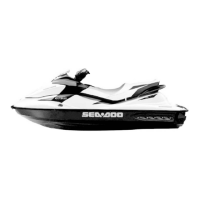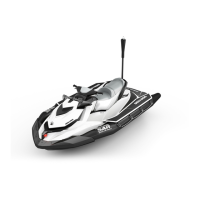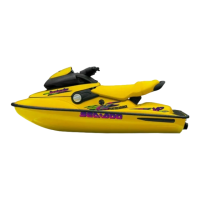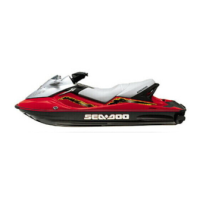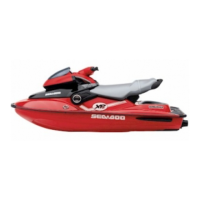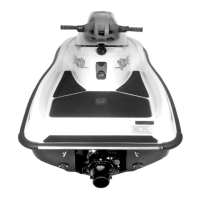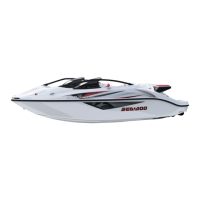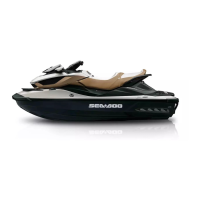SPECIAL SAFETY MESSAGES
Do not jump wakes or waves. Avoid
riding in very rough waters or practic-
ing extreme maneuvers like jumping
wakes or waves.
The brake feature of the iBR system
cannot prevent your PWC from drift-
ing due to current or wind. It has no
braking effect on the rearward veloc-
ity. Also note that your engine must be
runningtobeabletousethebrake.
The personal watercrafts' jet thrust
can cause injury. The jet pump may
pick up debris and throw it rearward
causing a risk of injuring people, dam-
aging the jet pump, or other property.
Observe the instructions on all safety
labels. They are there to help assure
that you have a safe and enjoyable out-
ing.
Do not store any objects in areas that
are not designed specifically for stor-
age.
Riding with passenger(s), pulling
tubes, a skier, or a wake boarder makes
the PWC handle differently and re-
quires greater skill.
Certain PWC models come equipped
with tow eyelets or a ski pole which,
canbeusedtoattachatowropefor
a skier, tube or wake boarder. Do not
use these attachment points or any
other portion of the watercraft to tow
a para-sail or any other craft. Personal
injury or severe damage may occur.
Combustion engines need air to op-
erate; consequently this PWC cannot
be totally watertight. Any maneuvers
such as turning constantly in tight cir-
cles, plunging the bow through waves,
or capsizing the watercraft, that cause
the air inlet openings to be under wa-
ter may cause severe engine problems
due to water ingestion. Refer to
HOW
TO STEER WATERCRAFT
in the
OP-
ERATING INSTRUCTIONS
section and
the
WARRANTY
section contained in
this Operator's Guide.
Engine exhaust contains carbon
monoxide (CO), which can cause seri-
ous health problems or death if inhaled
in sufficient quantities. Do not operate
the PWC in a confined area or allow
CO to accumulate around the PWC,
or in enclosed or sheltered areas such
as when docked, or when rafting. Be
aware of the risk of CO emanations
from exhaust of other PWCs.
Know the waters in which the water-
craft is to be operated. Current, tides,
rapids, hidden obstacles, wakes and
waves etc. can affect safe operation.
It is not advisable to operate the wa-
tercraft in rough waters or inclement
weather.
In shallow water, proceed with caution
and at very low speeds. Grounding or
abrupt stops may result in injury and
watercraft damage. Debris may also
be picked up and thrown rearward by
the jet pump onto people or property.
Always ride responsibly and safely.
Use common sense and courtesy.
Respect no wake zones, the environ-
ment, and the rights of other users of
the waterways. As the operator and
owner of a PWC, you are responsible
for damage by the wake of your PWC.
Do not let anyone throw refuse over-
board.
While your watercraft has the ca-
pacity of operating at high speeds, it
is strongly recommended that high
speed operation only be applied when
ideal conditions exist and are permi
t-
ted. Higher speed operation requires a
higher degree of skill and increases the
risk of severe injuries.
The forces generated on the body of
riders while turning, negotiatin
g waves
or wakes, operating in choppy waters,
or falling off the watercraft, especially
at higher speeds, may cause i
njury in-
cluding the possibility of broken bones
or more serious bodily injuries. Re-
main flexible and avoid sh
arp turns.
12
_______
SAFETY I
NFORMATION
________
